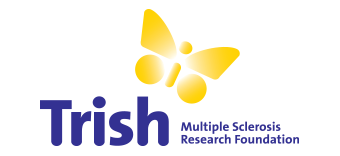Promoting myelin repair by targeting Wnt signalling
The Trish MS Research Foundation is greatly honoured to have co-funded with the National Health and Medical Research Council, a National Health and Medical Research Council / MS Research Australia Betty Cuthbert Fellowship awarded to Dr David Gonsalvez, University of Melbourne. The Trish Foundation fully funded the MS Research Australia contribution.
Dr Gonsalvez has made excellent progress with investigating the Wnt/B-catenin signalling pathway and its role in production of myelin. He has successfully generated a laboratory model where this biological pathway is blocked in the cells that make myelin (oligodendrocytes) and found that myelin production is promoted when the pathway is blocked. These findings suggest that this approach could be used to promote myelin repair within a biological system.
Dr Gonsalvez then performed experiments to determine whether blocking the Wnt/B-catenin signalling pathway in oligodendrocyte precursor cells (OPCs), the cells that make oligodendrocytes, affects their production and growth. The initial findings of this have shown that OPCs continue to grow when this pathway is blocked in response to demyelination and that myelination is improved. Interestingly, OPCs also play a role in blood brain barrier maintenance and immune response. Dr Gonsalvez is investigating whether this role of OPCs may be responsible for the remyelination events observed when the Wnt/B-catenin signalling pathway is blocked. He has discovered that the immune response may be involved in the replacement of myelin once it is lost and is investigating this further.
There is evidence that an elevated level of the Wnt/B-catenin signalling pathway prevents OPCs from forming oligodendrocytes and ultimately reduces the production of myelin. Dr Gonsalvez has shown that one of the key molecules that promotes this pathway is elevated in human MS tissue. He is continuing to uncover more information about the profile of molecules involved in the Wnt/B-catenin signalling pathway that are present in human demyelinating lesions.
Uncovering the mechanism and the molecules of the Wnt/B-catenin signalling pathway involved in myelination could potentially lead to the development of new therapies that could be used to promote myelin repair and slow the progression of MS.
This work has been presented at national and international conferences and Dr Gonsalvez has won multiple travel grants to allow him to attend these scientific meetings. He has also received a multitude of grants, including from the Department of Anatomy and Neuroscience for a $10,000 microscopy lens which will allow him to accelerate his observations of the myelin repair and has received the University of Melbourne Research Support Grant for $7,800 to retrofit a microscope with equipment that will allow high power imaging of compact myelin.
This Research was generously supported by The Woodend Foundation.
